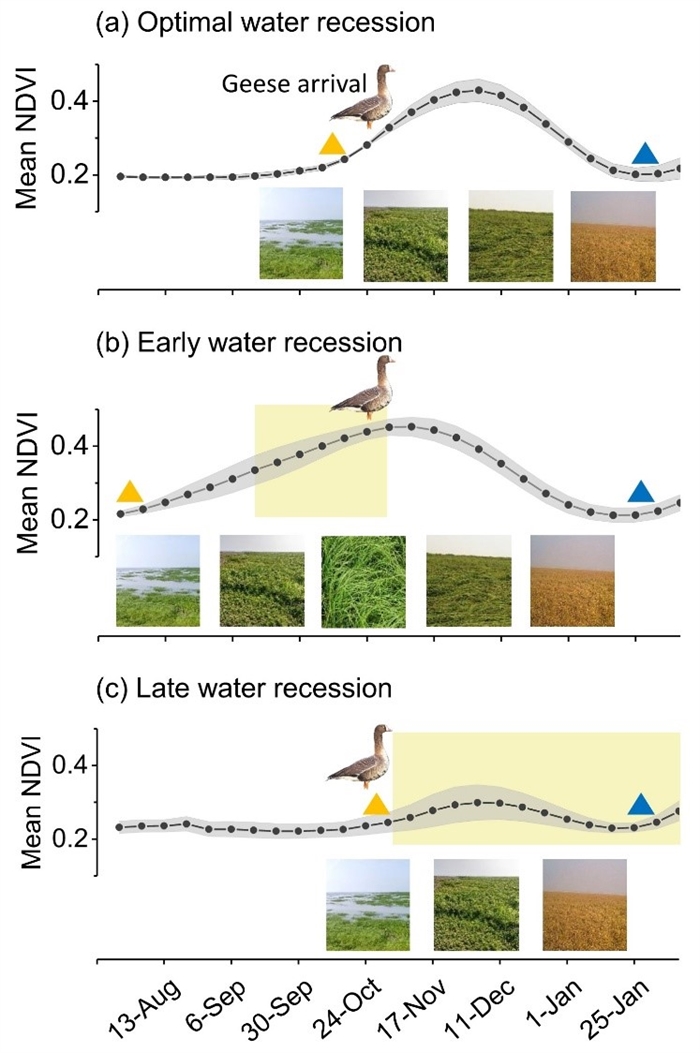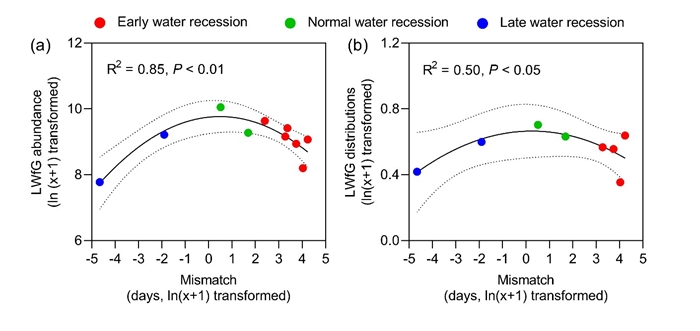Phenological Mismatch May Explain Population Decline of Lesser White-fronted Goose
East Dongting Lake is one of the largest wintering site for Lesser White-fronted Goose Anser erythropus. However, its population size in this site has been declining significantly over the past decade, which might be related to the phenological mismatches between migratory birds and food availability.
Recently, researchers from the Institute of Subtropical Agriculture (ISA) of the Chinese Academy of Sciences explored the consequences of water regime changes on phenological mismatches and detected the relative role of the mismatch as a driver of annual variations in abundance and distribution of the Lesser White-fronted Goose in East Dongting Lake.
The study was published in Ecological Indicators on May. 6.
In this study, phenological mismatch was defined as days between arrival of geese and timing of the optimal Normalized Difference Vegetation Index (NDVI).
The researchers found that water recession pattern (optimal, early and late water recession) significantly influenced NDVI and habitat area when geese arrived at the wintering site. Non-optimal water level recession caused a greater phonological mismatch, which ultimately resulted in lower geese abundance and a more concentrated distribution.
Upon further analysis, they found that an insufficient suitable habitat area might be a mechanism of the effect of phenological mismatch on Lesser White-fronted Geese under a late water recession pattern. And a lack of high-quality habitat might also be a mechanism responsible for the effect of phenological mismatch under an early water recession pattern.
"We hope this study could help in protecting the global population and Eastern subpopulation of the Lesser White-fronted Goose and understanding the decreasing population trend of this species," said Prof. ZOU Yeai.
Contact: ZOU Yeai
E-mail: zouyeai@163.com
Institute of Subtropical Agriculture, Chinese Academy of Sciences

Figure 1. Variations in food availability (indicated by NDVI) under (a) optimal, (b) early, and (c) late water recession patterns. Yellow areas indicate phenological mismatches.
Figure 2. Relationships between the mismatch of the time of geese arrival and optimal NDVI and goose (a) abundance and (b) distribution pattern in East Dongting Lake.
Download attachments: